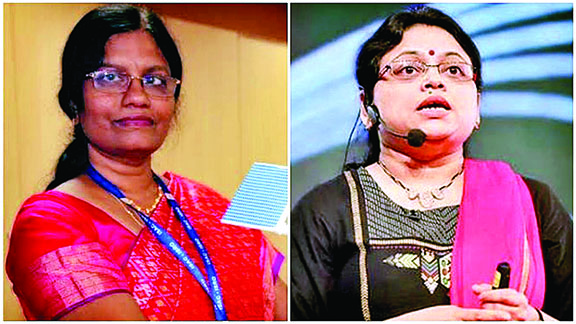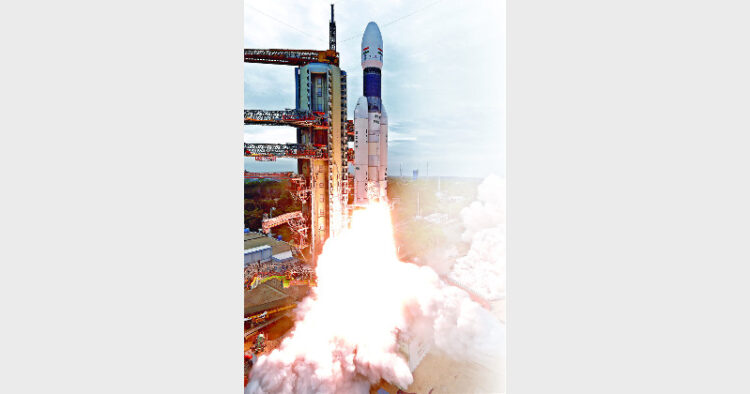Chandrayaan-2/ Opinion

Along with increasing our knowledge and understanding of space and promote global alliances in space exploration, Chandrayaan-2 will inspire thousands of future generations of scientists and engineers
Sudhindra Haldodderi
While you are reading this article, the Chandrayaan-2 spacecraft is on its maneuver to raise its orbit around the earth. Currently, its nearest point from the earth is 230 km away, while the farthest point is at 45,163 km from earth. As it raises its orbit, it obeys the laws of physics and gains its speed to retain the momentary rotational stability within the earth’s gravitational pull.
At a predetermined moment and distance from the earth, the moon’s gravitational pull shall be predominant than the earth. By the time we get ready to celebrate our Independence Day, the Chandrayaan-2 shall get liberation from earth’s gravity and would prepare for trans-lunar injection. The spacecraft shall drift to the orbit of moon, as predicted on the drawing boards of ISRO scientists and engineers. As it is planned, the spacecraft is expected to reach the moon’s orbit by August 20. Many of our ISRO launches were applauded as text book perfect including the Chandrayaan-1 and Mangalyaan. The reason being the many right-first-time successes of the country in launching satellites to the right orbits. Very few countries in this world are as lucky as Bharat in exploring the uncertain space – specially the moon and the mars – in their maiden attempts.
Unlimited Potential of Chandrayaan
The cynics have been questioning the country, why explore moon at this juncture with a tiny rover, when man had already landed on its soil five decades ago. When Chandrayaan-1 was initiated a decade ago, similar skeptic comments were hurled against ISRO. Many would not still know the benefits Bharat reaped out of that mission. Chandrayaan-1 proved the capability of Bharat to take up indigenous space missions out of the earth’s influence. Till then, no one else in the world was able to position its satellite on lunar orbit on a maiden attempt. Bharat did it and repeated its feat in Mangalyaan mission as well. One should remember that it is Bharat which first found the traces of water on the moon. And it was one of the most economical space missions of the world. The moon is the closest cosmic body for us to discover many unknowns and document. It is a potential testbed to demonstrate our space technologies required for the future interplanetary missions like landing on Mars. Chandrayaan-2 would increase our knowledge and understanding of space and promote global alliances in space exploration. It would inspire thousands of future generation scientists and engineers.
Bharat has been perfecting its launcher capability, especially in the four-tonne payload category. With the GSLV Mk.III success in catapulting Chandrayaan-2 on earth orbit of 40,000 km, the indigenous cryogenic engine has proved its capability. With this maturity, all our 4-T category communication satellites on geosynchronous orbit would find an easy and affordable launch path. This would initiate a new revenue opportunity for launching 4-T payloads of other countries into geo-synchronous orbit. The PSLV success story has already shown us the 2-T category space-market, and ours is the most economical launch option in the world. Bharat has not stopped its rocket programme at just 4-T, it has an ambitious launcher up to 10-T payload capability. This would help us in carrying building blocks for our own or collaborative space stations in future. The future communication satellites would be much heavier than the present 4-T, and our new rockets can launch such heavier, more capable and long-lasting ones.
Taking Bharat to a new league
Speaking about Chandrayaan-2 payloads, once they are successful, we get the competence of soft-landing on celestial bodies. We also acquire the capability of maneuvering autonomous vehicles on moon, mars and other objects in space. This would not only add experience to our scientists on their future space exploration programmes but infuse greater confidence for undertaking new challenges. For example, this Chandrayaan-2 will shed light on a completely unexplored (by anyone else) section of the moon — its south polar region.
Chandrayaan shall also try to corroborate the discoveries made by Chandrayaan-1, such as the presence of water molecules on the moon and new rock types with unique chemical composition
This might provide new vistas on the origin and evolution of the moon. The rover – pragyaan – shall conduct detailed topographical studies, comprehensive mineralogical analyses, and a host of other experiments on the lunar surface.
Chandrayaan shall also try to corroborate the discoveries made by Chandrayaan-1, such as the presence of water molecules on the moon and new rock types with unique chemical composition. To enthuse our budding space scientists in schools and colleges, Chandrayaan-2 has several science payloads to expand the lunar scientific knowledge. The orbiter and rover (for a limited period) shall carry out a detailed study of moon’s topography. They would also collect seismographic data, identify minerals and their distribution. Further, the knowledge acquired from surface chemical composition, thermo-physical characteristics of topsoil and composition of the tenuous lunar atmosphere, would lead to a new understanding of the origin and evolution of the moon.

Vanitha Muthayya and Ritu Karidhal-Women power at ISRO
While we are onto Chandrayaan-2, Bharat is preparing its cosmonauts for Gaganyaan – another ambitious program of sending men to space. This involves the development of perfect vehicles which can enter space and return safely. The success of initial space recovery experiments has boosted the ISRO scientists in perfecting the art of atmosphere re-entry. Further, recovery of the capsule with men on board, from the sea is also being practiced. The next challenge in space Bharat is getting prepared to face landing its men on the moon. Though it appears to be a long-cherished dream, the time is not too far-off from reality. We shall be soft-landing a rover on the mars as well in the future. Time to chant ‘Hamaara Bharat Mahaan’.
(The writer is a former Scientist of DRDO, former Deputy General Manager of HAL and a former Professor of Aerospace Engineering, has vast experience in design, development, and integration of mechanical systems for aircraft. Currently he works as a technical consultant for private aerospace engineering companies)













Comments